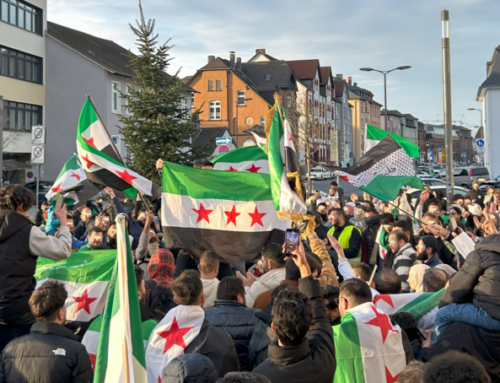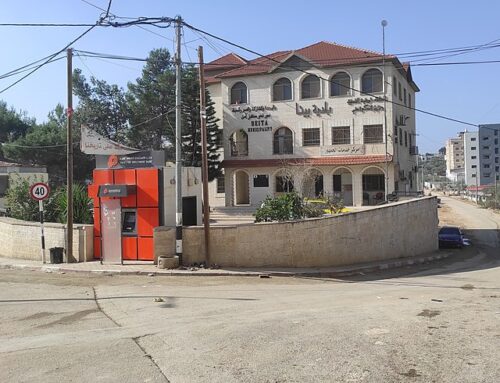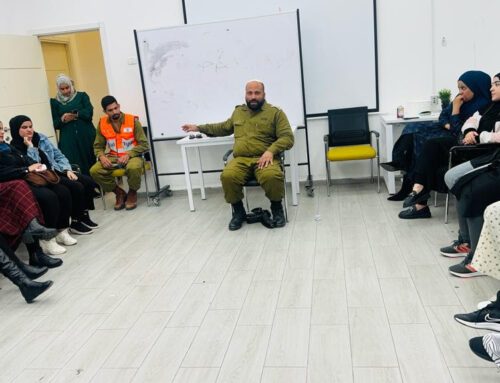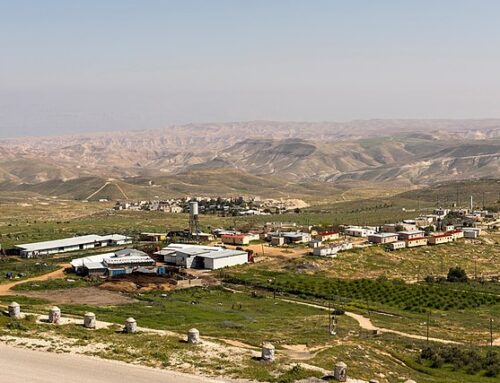Here is a posting from Meretz USA blogger in Israel, Hillel Schenker, who was unable to post this directly due to technical difficulties. Hillel writes:
We may not be on the Eve of Destruction, as Barry McGuire once sang about the Vietnam War, but things are definitely getting worse.
And it should be no surprise to anyone. Did anyone really think that it was possible to have a sterile military action, with few civilian casualties? Did anyone really believe that it was possible to have a ground invasion, without “errors” such as yesterday’s bombing of the UNRWA camp where dozens of innocent Palestinian civilians had taken refuge?
Last Friday January 2nd I wrote The View From Tel Aviv that was published in The Nation.
On Saturday evening I felt a moral obligation to go to the demonstration in Tel Aviv that called upon the Israeli government not to begin a ground invasion and to declare an immediate cease-fire. As we gathered at Rabin Square, I already began to hear reports that a ground invasion was about to begin.
The demonstration was organized by the radical part of the Israeli peace movement, and although I don’t always agree with their positions, and believe that many of them take stands which alienate them from the Israeli mainstream, I and others from Meretz and Peace Now, the more mainstream Zionist-left, felt it was vitally important that we be represented as well. I agreed with most of the official slogans, which called for an immediate cease-fire, no to a ground invasion, security for the Palestinians in Gaza and the Israelis in Southern Israel (Gaza and Sderot was the catch-word) and a two state solution. Red flags carried by the disciplined Hadash (Communist) marchers predominated, along with a scattering of black anarchist flags (raised by Anarchists Against the Wall group).
The marchers from Meretz, Peace Now and the Israeli PeaceNGO Forum wanted to carry Israeli flags as well, but unfortunately most of us don’t have flags lying around the house. The idea was to demonstrate that calling for a cease-fire was the patriotic thing to do, and that the flag did not only belong to the right-wing demonstrators, apparently organized by the Likud, who convened on all of the side streets on the Ibn Gvirol route from Rabin Square to the Cinemateque, spewing words of hatred against the Israeli Arabs, and the Jewish demonstrators as well. “Traitors, go to Gaza!” was the more moderate curse thrown at the 10,000 demonstrators. Thus there were only a handful of Israeli flags carried by the marchers, while the Uri Avnery’s Gush Shalom contingent carried placards with both the Israeli and the Palestinian flags, symbolizing the idea of two states for two peoples.
The police, who were out in full force, did a very good job of fending off the anti-demonstration demonstrators, arresting six of them. Even police helicopters flew over the scene guarding the route, in keeping with Mayor Ron Huldai’s op-ed in Yediot Ahronot, in which he stated that while he supported the military operation, he also supported the legitimate right of any one he disagreed with him to express their views. He guaranteed that freedom of expression and non-violent demonstration would be preserved in Tel Aviv during the year of its 100th anniversary.
On Sunday evening, I felt an equal moral obligation to be a part of a Israeli PeaceNGO delegation that went down to Sderot to meet with a group from Another Voice from Sderot at the home of Nomika Tzion, one of the founders of the Migvan, the urban kibbutz that was founded 22 years ago. Our goal was to express solidarity with both the citizens of Sderot and the neighboring kibbutzim and towns, alongside the suffering people of Gaza.
Another Voice from Sderot was founded by Eric Yellin, a high-tech specialist who has lived in Sderot for around 20 years. The group includes Sderot residents, together with members of some of the neighboring kibbutzim, all of whom have suffered from the Kassam missiles during the past 8 years. It began as a dialogue group with Gazans, evolved into a joint Gaza-Sderot blog, and eventually morphed into the Another Voice from Sderot group. Prominent among them are social workers and lecturers at the Sapir College, which is based both in Sde Boker and Sderot. While there are differences of opinion within the group, most of the members are opposed to the current military operation. Due to the security situation, we were not allowed to bring more than 20 people because they couldn’t provide a secure place for more.
The 20 visitors and the 10 host briefly introduced each other, and then we had a very emotional and moving exchange of views and experiences. I won’t attempt to describe the 3 hour encounter, and will just mention a few comments that were made. Some of the PeaceNGO group that came down from the north mentioned the palpable fear that they felt as they neared Sderot. And the fact is that two missiles hit Sderot just an hour before we arrived, though the only sound we heard while we were there was the muffled explosions of the Israeli artillery and sonic booms above us.
I admit that as we neared Sderot, I too tensed up a bit, clearly reminding me of the feelings I had during my eight months of active service in a combat unit on the Golan Heights during the Yom Kippur War and its aftermath, and the feelings I felt in Tel Aviv when the Scud missiles fell during the first Gulf War. At the same time, I felt that it was absolutely necessary to be there, to express solidarity and empathy, while calling for a cease-fire and another way, not from the relative safety of Tel Aviv, but from the frontlines.
Nomika Tzion said that she felt that the six months of ceasefire had enabled her to begin recovering from the scars of eight years of Kassam missiles, and now this new round of warfare had brought a return of all the fears and anxieties. Another member of Another Voice from Sderot expressed concern that Israeli society was relying more and more on the use of force to solve problems, and it was distorting the very nature of the society and its values.
I felt that the fact that three Palestinian Arab Israeli citizens were with us was of particular importance. If this was my first visit to Sderot in about 22 years, for Ahmad Badir, the director of Givat Haviva’s Jewish-Arab Institute from Kfar Yassif, this was his first visit ever. Given the attitude towards the war within the Arab sector of Israeli society, it required a high level of civil courage to participate in this meeting. And while Ahmad has no relatives in Gaza, the director of the Sulha project from Jaffa (I didn’t catch his name) has many relatives there, some of whom have been killed and wounded, and still he came.
Back at the Palestine-Israel Journal offices in East Jerusalem, there has been a combination of tension and sadness in the office – but also a clear resolve that our work must continue, and we have scheduled an editorial board meeting next week to discuss the situation, and to plan our activities for the coming year. There is a clear sense of solidarity and shared destiny among the Israeli and Palestinian members of our editorial board.
Yesterday, perhaps because of my article in The Nation, I was invited to appear on the BBC TV news. I described much of what I have written above in sound bites, within the 3-4 minutes allotted me. When the interview began, I was introduced as co-editor of the Palestine-Israel Journal, and I held before the camera the cover of our latest issue devoted to Human Security. Human Security is defined as “freedom from fear and freedom from want.” And that’s what all Israelis and Palestinians need right now.






Leave A Comment